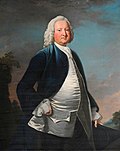Jacobitism

Jacobitism was (and, to a much smaller extent, is) the political movement that tried to put the Stuarts back onto the thrones of England, Scotland and Ireland. It took its name from the Latin form Jacobus of the name of King James II and VII.
Jacobitism began after James II and VII was deposed in 1688. He was replaced by his daughter Mary II jointly with her husband, William of Orange, who was also her first cousin. The Stuarts lived on the European Continent and sometimes tried to get back the throne with the help of France or Spain. The most important places of Jacobitism were Ireland and Scotland, especially the Scottish Highlands. In England, Jacobitism was strongest in the North. There was some support also in Wales.
Many Catholics supported Jacobitism and hoped the Stuarts to end the laws against them. Many others helped Jacobite military campaigns for all sorts of reasons such as in the hope of improve their fortunes. In Scotland, the Jacobite cause became a lasting romantic memory.
Further reading
- Ruvigny & Raineval, Marquis de (Melville Henry Massue) (comp.). The Jacobite Peerage, Baronetage, Knightage & Grants of Honour. Edinburgh: T. C. & E. C. Jack, 1904.
- The Lion in the North, John Prebble, Penguin Books 1973
- Maritime Scotland, Brian Lavery, B T Batsford Ltd., 2001, ISBN 0-7134-8520-5
- Scotland, A Concise History, Fitzroy Maclean, Thames and Hudson 1991, ISBN 0-500-27706-0
- Bonnie Prince Charlie, Fitzroy Maclean, Canongate Books Ltd. 1989 ISBN 0-86241-568-3
- The Jacobites, Britain and Europe 1688 – 1788, Daniel Szechi, Manchester University Press 1994 ISBN 0-7190-3774-3
- The Myths of the Jacobite Clans, Murray G. H. Pittock, Edinburgh University Press 1995 ISBN 0-7486-0715-3
- Came ye o'er frae France – folk-rock version by Steeleye Span.
- Georgian Monarchy: Politics and Culture, 1714-60, Hannah Smith, Cambridge University Press 2006
Jacobitism Media
'The True Law of Free Monarchies;' James VI and I's political tract formed the basis of Stuart ideology
Charles I, whose policies caused instability throughout his three kingdoms
James II, 1685, dressed in military uniform
Alexander Forbes, 4th Lord Forbes of Pitsligo; his support of the doctrine of indefeasible hereditary right placed him in a minority of Jacobites by 1745
Tyrconnell, Deputy Governor of Ireland; his appointment of Catholics to military and political positions built widespread support for the Jacobite regime
The Spanish Regiment of Hibernia, c. 1740; foreign military service remained common for Irish Catholics until banned after 1745
Tory minister and Jacobite Lord Bolingbroke; driven into exile in 1715 and pardoned in 1720
Jacobite commander George Murray; a pro-Union, anti-Hanoverian Scot who fought in the 1715, 1719 and 1745 Risings but loathed Prince Charles, he encapsulated the many contradictions of Jacobite support
Flora MacDonald by Allan Ramsay c. 1749–1750; note white roses, a Jacobite symbol
Welsh Tory Sir Watkin Williams-Wynn; his blue coat was a colour often worn by Jacobite sympathisers
Other websites
- "Scottish History - The Jacobites". biggrowl.co.uk. Archived from the original on 1 March 2010. Retrieved 7 April 2010.
- "The Jacobite Heritage". jacobite.ca. Retrieved 7 April 2010.









